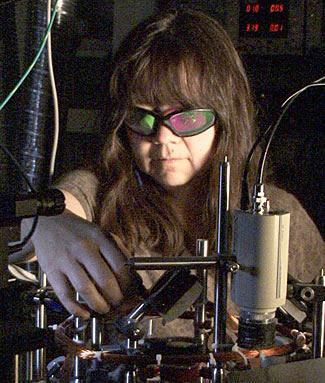 Scientists at JILA, working with Italian theorists, have discovered another notable similarity between ultracold atomic gases and high-temperature superconductors, suggesting there may be a relatively simple shared explanation for equivalent behaviors of the two very different systems.
Scientists at JILA, working with Italian theorists, have discovered another notable similarity between ultracold atomic gases and high-temperature superconductors, suggesting there may be a relatively simple shared explanation for equivalent behaviors of the two very different systems.
Jul 7th, 2010
Read more
 Physicists at the National Institute of Standards and Technology (NIST) have demonstrated an ion trap with a built-in optical fiber that collects light emitted by single ions (electrically charged atoms), allowing quantum information stored in the ions to be measured. The advance could simplify quantum computer design and serve as a step toward swapping information between matter and light in future quantum networks.
Physicists at the National Institute of Standards and Technology (NIST) have demonstrated an ion trap with a built-in optical fiber that collects light emitted by single ions (electrically charged atoms), allowing quantum information stored in the ions to be measured. The advance could simplify quantum computer design and serve as a step toward swapping information between matter and light in future quantum networks.
Jul 7th, 2010
Read more
Rice University researchers have come up with a computer program to accurately simulate protein folding dramatically faster than previous methods. It will allow scientists to peer deeper into the roots of diseases caused by proteins that fold incorrectly.
Jul 7th, 2010
Read more
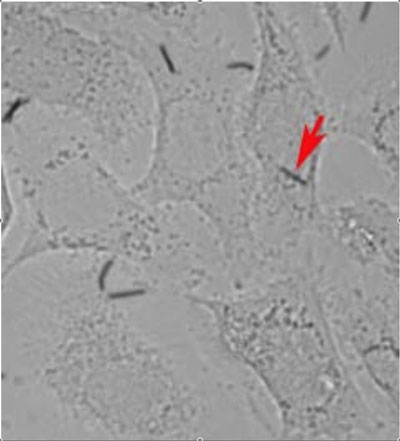 Imagine being able to drop a toothpick on the head of one particular person standing among 100,000 people in a stadium. It sounds impossible, yet this degree of precision at the cellular level has been demonstrated by researchers affiliated with the Johns Hopkins University Institute for NanoBioTechnology.
Imagine being able to drop a toothpick on the head of one particular person standing among 100,000 people in a stadium. It sounds impossible, yet this degree of precision at the cellular level has been demonstrated by researchers affiliated with the Johns Hopkins University Institute for NanoBioTechnology.
Jul 7th, 2010
Read more
The U.S. Government Accountability Office (GAO) has released a report "Nanotechnology: Nanomaterials Are Widely Used in Commerce, but EPA Faces Challenges in Regulating Risk" (pdf) in which it recommends that EPA complete its plans to modify its regulatory framework for nanomaterials as needed.
Jul 7th, 2010
Read more
The Micro and Nanotechnology Commercialization Education Foundation, MANCEF, is celebrating the 10th anniversary of its Commercialization of Micro-Nano Systems Conference (COMS) in New Mexico.
Jul 7th, 2010
Read more
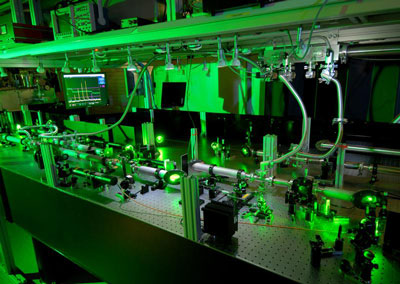 Auf dem Forschungscampus Garching wird in den kommenden Jahren das Centre for Advanced Laser Applications (CALA) errichtet. Hauptanliegen der universitaeren Forschung ist die Entwicklung von Verfahren zur grundlegenden Verbesserung der Heilungschancen von Krebspatienten.
Auf dem Forschungscampus Garching wird in den kommenden Jahren das Centre for Advanced Laser Applications (CALA) errichtet. Hauptanliegen der universitaeren Forschung ist die Entwicklung von Verfahren zur grundlegenden Verbesserung der Heilungschancen von Krebspatienten.
Jul 7th, 2010
Read more
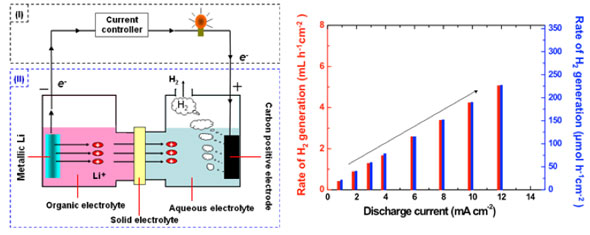 Researchers in Japan have developed the concept of a clean hydrogen production system based on controlled lithium-water electrochemical reactions and have successfully investigated the system.
Researchers in Japan have developed the concept of a clean hydrogen production system based on controlled lithium-water electrochemical reactions and have successfully investigated the system.
Jul 7th, 2010
Read more
Self cleaning paint, miniature sensors that detect disease in its early stages and next generation batteries are all revolutionary products that could result from research undertaken at the new $57 million Melbourne Centre for Nanofabrication.
Jul 7th, 2010
Read more
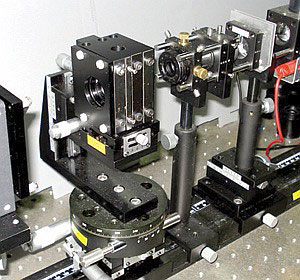 Quality control of production lines to benefit from a digital wavefront sensor that provides rapid non-contact measurement of object surfaces.
Quality control of production lines to benefit from a digital wavefront sensor that provides rapid non-contact measurement of object surfaces.
Jul 7th, 2010
Read more
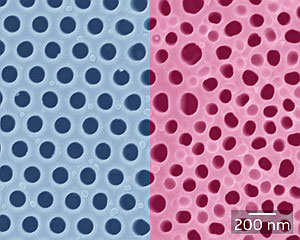 An innovative imprinting technique produces highly ordered alumina films with nanometer-sized pores on silicon wafers.
An innovative imprinting technique produces highly ordered alumina films with nanometer-sized pores on silicon wafers.
Jul 7th, 2010
Read more
The College of Nanoscale Science and Engineering ("CNSE") of the University at Albany and the Children's Museum of Science and Technology ("CMOST") partnered to provide 20 middle-school students with a unique firsthand look at the exciting world of nanotechnology when they attended the CNSE-CMOST Summer NanoCamp on July 6 at CNSE's Albany NanoTech Complex.
Jul 6th, 2010
Read more
Scientists have designed a nanoparticle that appears to effectively deliver genetic material into cells with minimal toxic effects.
Jul 6th, 2010
Read more
Research could lead to remote stimulation of cells to treat cancer or diabetes.
Jul 6th, 2010
Read more
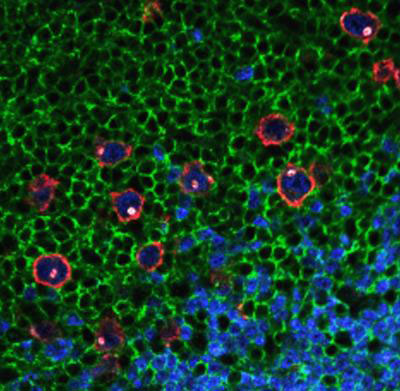 The tunable fluorescent nanoparticles known as quantum dots make ideal tools for distinguishing and identifying rare cancer cells in tissue biopsies, Emory and Georgia Tech scientists have demonstrated.
The tunable fluorescent nanoparticles known as quantum dots make ideal tools for distinguishing and identifying rare cancer cells in tissue biopsies, Emory and Georgia Tech scientists have demonstrated.
Jul 6th, 2010
Read more
At first, nanoshocks may seem like something to describe the millions of aftershocks of a large earthquake. But Lawrence Livermore National Laboratory physicists are using an ultra-fast laser-based technique they dubbed 'nanoshocks' for something entirely different. In fact, the nanoshocks have such a small spatial scale that scientists can use them to study shock behavior in tiny samples such as thin films or other systems with microscopic dimensions.
Jul 6th, 2010
Read more
 Scientists at JILA, working with Italian theorists, have discovered another notable similarity between ultracold atomic gases and high-temperature superconductors, suggesting there may be a relatively simple shared explanation for equivalent behaviors of the two very different systems.
Scientists at JILA, working with Italian theorists, have discovered another notable similarity between ultracold atomic gases and high-temperature superconductors, suggesting there may be a relatively simple shared explanation for equivalent behaviors of the two very different systems.







 Subscribe to our Nanotechnology News feed
Subscribe to our Nanotechnology News feed